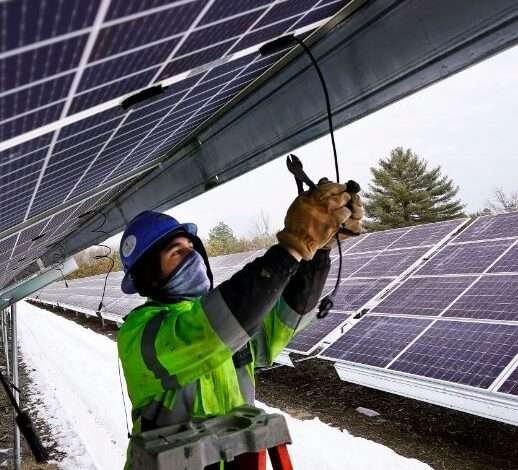The Clash of Solar Panels: Pushback County by County

It’s a showdown no one expected: solar enthusiasts versus conservationists. On one side, the solar energy fans champion a cleaner alternative to fossil fuels, erecting massive solar projects across the USA. On the other, conservationists and locals near these solar sites gasp in horror as green fields transform into rows of silicon panels, impacting ecologically sensitive areas.
“It’s kind of funny that there’s resistance to wind and solar, which are environmental solutions,” chuckled Michael Webber, an energy resources professor at the University of Texas at Austin.
But hey, with solar gaining momentum and going mainstream, some resistance was inevitable. “Anytime you do anything at scale, you start to get resistance,” Webber explained. “There’s resistance to oil and gas, nuclear, and even shopping centers. It’s a sign of solar’s maturity.”
These battles play out in states and counties, forcing communities to weigh the benefits of decarbonizing the economy against the environmental impacts.
In the quest for new solar locations, researchers, environmentalists, and energy companies have become creative. Forget vast open spaces; now they’re eyeing spots like agricultural canals, grazing pastures, rooftops, parking lots, and even landfills. Solar AquaGrid, for instance, is installing solar-panel canopies over water canals in California’s Central Valley, reducing water evaporation while generating electricity. Talk about multitasking!
Even Walmart joined the solar party, with Environment America pushing for solar canopies on their roofs and parking lots by 2035. “There’s only so much land on this planet,” Johanna Neumann of Environment America quipped, “and right now, those rooftops are doing nothing other than keeping the sun out and the rain out.”
The push for solar farms sometimes meets resistance. Over 57 cities and counties proposed solar moratoriums, according to NBC News. But fear not, Walmart, as it already ranks high in solar capacity among US businesses, and their goal is 100% renewable energy by 2035.
While utility-scale projects face hurdles, smaller solar sites have their benefits. They may lack economies of scale, but they bring revenue, self-sufficiency, reduced costs, and opportunities for local storage. Plus, solar communities may be the future.
With solar enthusiasts seeking nontraditional allies, they’ve even found friends in unusual places. Google’s Project Sunroof tells you how much solar energy you could create at your address. Meanwhile, Aurora Solar uses technology to identify overlooked locations for solar panels.
And why not? Let’s get creative with solar! In Houston, they’re turning a former landfill into a massive solar project. In Northern California, they claim to have the largest floating solar farm, and a China-based company boasts the world’s biggest floating solar array.
But hey, creative locations mean fewer complaining neighbors. As Michael Webber sagely put it, “To solve problems, we have to do stuff, and sometimes people don’t want to do stuff. It’s annoying. We have to decide as a nation whether we’re going to invest in the future or not.”
So, as the solar energy revolution continues, will we all unite under the sun, or will the shadows of resistance linger? Only time will tell, but for now, let’s enjoy the humorous battle between solar lovers and conservationists!






